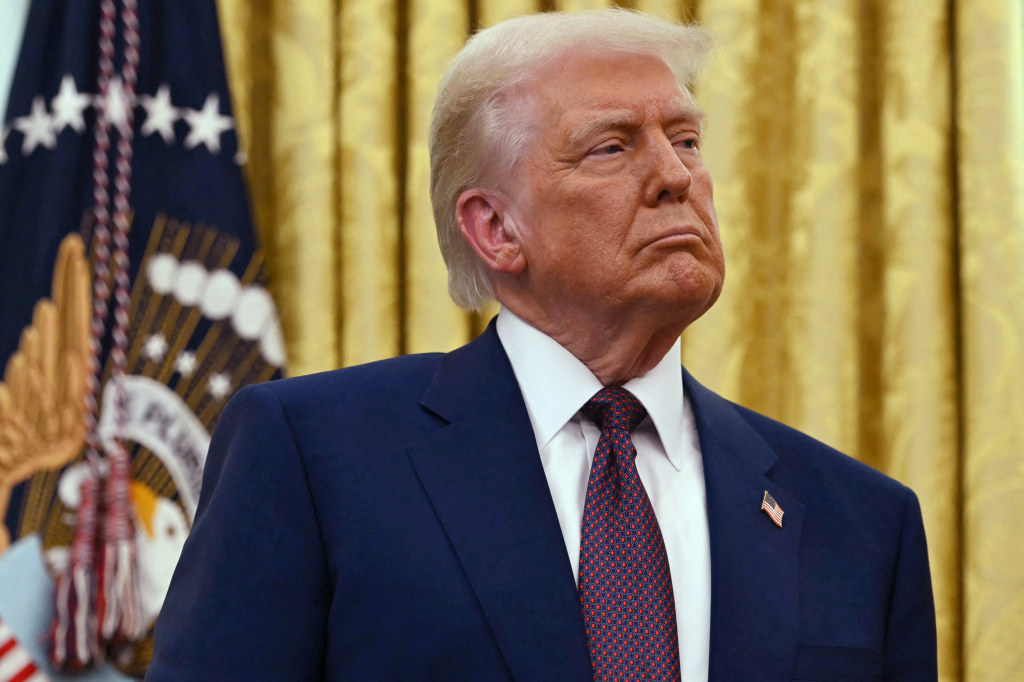
# Uncertainty Hangs Over U.S. Research Funding Due to Trump Administration’s Budget Approaches
The outlook for U.S. federal research funding is encountering unparalleled uncertainty as President Trump’s administration adopts a more assertive approach to budget management. Unlike during Trump’s first term, when Congress intervened frequently to avert major cuts to research organizations like the National Science Foundation (NSF) and the National Institutes of Health (NIH), political analysts suggest that Capitol Hill is now less inclined to step in. This change is primarily linked to the executive branch’s practice of “impoundment,” a contentious method of withholding funds that Congress has approved.
## Congressional vs. Executive Branch: A Budgetary Impasse
Alessandra Zimmermann, who leads the research and development budget and policy initiative at the American Association for the Advancement of Science (AAAS), describes the current budgetary climate as significantly different from Trump’s previous term. “It is a very, very different situation now,” Zimmermann states. “The primary distinction this time is that the executive branch seems to have utilized impoundment to seize financial control from Congress.”
Impoundment takes place when the president chooses not to allocate funds that have been authorized by Congress. While this authority has stirred legal discussions since the Nixon administration, Trump’s latest executive actions have escalated this approach by ordering government entities to withhold money that has already been sanctioned and enacted into law. Democratic leaders from congressional appropriations committees have expressed frustration, contending that if the executive branch declines to implement spending initiatives, Congress’s influence in the budgeting process is becoming marginalized.
## Possible Consequences for Science and Research
The ambiguity surrounding federal funding poses a threat to the advancement of scientific research at major institutions. While discussions for the budget of the current fiscal year are ongoing, the government is functioning under a provisional continuing resolution, which permits agencies to operate at the previous year’s funding levels. Nonetheless, this temporary measure is set to expire on **March 14**, increasing the risk of a government shutdown if Congress fails to reach a consensus in time.
A shutdown could have severe implications for federal research agencies, Zimmermann cautions. “All ‘non-essential’ personnel will be furloughed, and no fresh federal research grants would be issued. Funding committed to existing grants could also be frozen.”
Historical evidence highlights the disruptive nature of such shutdowns. When the U.S. government partially closed in December 2018 due to a budget conflict over border wall funding, **90% of the NSF’s workforce was furloughed**, halting vital research initiatives. Additionally, a 2019 report from the **Congressional Budget Office (CBO)** found that this shutdown incurred an economic cost of $11 billion to the U.S., of which $3 billion was lost permanently.
## Workforce Reductions and Diminishing Research Institutions
In addition to the possible shutdown consequences, the Trump administration has already implemented considerable workforce cuts at essential research agencies. Reports indicate that:
– Over **1,100 NIH employees** (approximately **6%** of its workforce) have been let go.
– The **Centers for Disease Control and Prevention (CDC)** has reduced its workforce by **1,300 positions**, constituting **10%** of its employees.
– The **NSF** has decreased its staff by **168 employees**, also representing **10%** of its personnel.
Zimmermann has commenced tracking full-time equivalent employees (FTEs) at these agencies to evaluate the broader effects. Generally, these figures are included in the president’s annual budget proposal; however, she is accumulating data in real-time to observe trends as the Trump administration formulates its **2026 budget**.
## Scientists Prepare for an Ambiguous Future
Amid rising concerns regarding research funding, many within the scientific community are seeking clarity. However, experts caution that making accurate predictions is challenging due to the “uncharted territory” the U.S. government has entered.
Zimmermann recognizes that the circumstances remain dynamic, stating, **“I don’t know what is going to happen, but expect the next month or so to be tumultuous.”** She is broadening her observational efforts, monitoring social media narratives and media coverage to collect anecdotal insights on how researchers and institutions are navigating the administration’s policies. However, she emphasizes that much of this information remains preliminary and has yet to be disclosed publicly.
Meanwhile, researchers and institutions are confronted with a pivotal question: Will Congress regain authority over scientific funding, or will the executive branch’s impoundment practices redefine the future of federal research assistance? For the moment, the answer is unclear—along with the long-term prospects for U.S. science and innovation.
—
### Key Takeaways:
✅ **Trump’s executive measures have resulted in funding impoundment, circumventing Congress’s authority.**
✅ **A potential government shutdown on March 14 remains a significant risk, which could halt research grants and delay initiatives.**
✅ **Research institutions like the NIH, CDC, and NSF are experiencing considerable